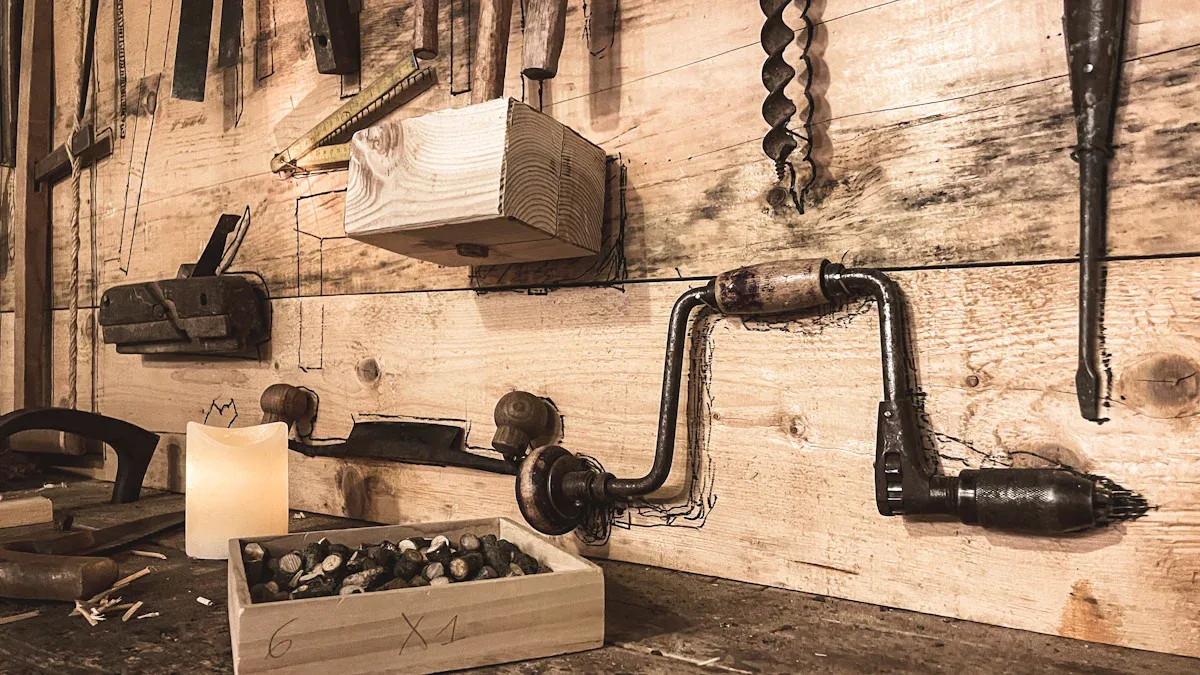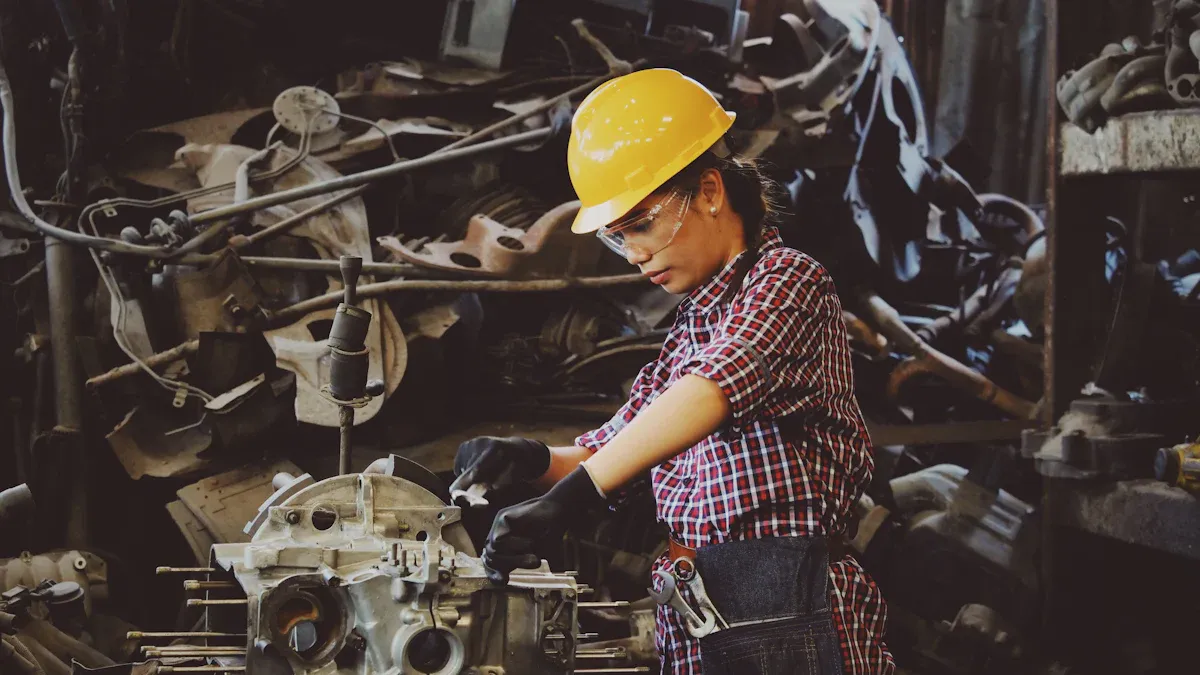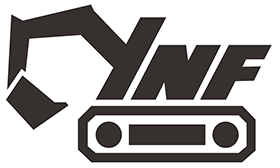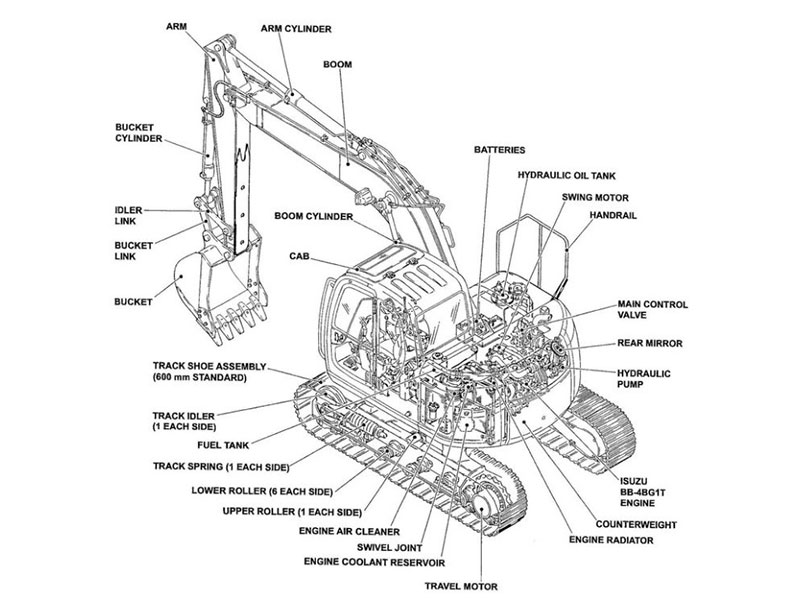
Proactive and regular maintenance helps you use your bucket wheel excavator parts longer. It also makes the parts last more years. If you do not take care of your equipment often, it can break down suddenly. Sudden breakdowns cost much more than regular care. For example, taking care of heavy equipment each year costs between $4,000 and $6,000. But fixing a big problem just once can cost over $36,000. This big price gap shows why you should follow good tips and keep a strong maintenance routine for your excavator.
Having a good maintenance mindset keeps your investment safe. It also helps every part on your bucket wheel excavator parts list last longer.
Cost Type | Cost Range (Annual) | Notes |
|---|---|---|
Preventive Maintenance | $4,000 – $6,000 | Usual yearly cost for heavy equipment |
Unexpected Component Repair | $1,560 – $3,120 | Yearly average for replacing parts |
Major Repairs (e.g., engine) | > $36,000 | Can cost six times more than regular care |
Cost Ratio | Reactive maintenance costs 3-4x higher than preventive maintenance | Shows why preventive plans save money |
Key Takeaways
Look at your bucket wheel excavator parts every day. This helps you find damage early. It stops big problems that cost a lot.
Clean your machine often. Make sure it has enough oil. This lowers rubbing and helps parts last longer.
Stick to a regular maintenance plan. Check your machine on schedule. Change old parts before they break.
Pick the right replacement parts from trusted suppliers like YNF Machinery. This keeps your machine safe and working well.
Teach operators how to care for the machine each day. Show them how to use it safely. This protects the machine and stops extra damage.
Bucket Wheel Excavator Parts List

When you look at the bucket wheel excavator parts list, you see many key items. Each part helps your machine stay strong and safe. You should know these parts well. This way, you can spot problems early and keep your excavator working.
Major Components
The bucket wheel excavator parts list has some big parts. These help your machine dig, move, and work every day.
Bucket Wheel: This is the main part of your excavator. It scoops up dirt and gets worn out fast.
Boom and Superstructure: These hold up the bucket wheel and help it reach far.
Undercarriage Components: These are tracks, rollers, and frames. They carry the weight and help your excavator move.
Drive System: Motors and gears make the bucket wheel and other parts move.
Hydraulic System: Pumps, hoses, and cylinders help things move. You need to check for leaks and worn spots.
Electrical System: Wires, sensors, and controls help you use the excavator safely.
Tip: Always look at your bucket wheel excavator parts list before you check your machine. This helps you find worn parts faster and not miss anything important.
Common Excavator Wear Parts
Some parts on your bucket wheel excavator parts list need more care. These are called excavator wear parts. They get a lot of friction, hits, and stress every day.
Bucket Teeth and Cutting Edges: These dig into hard ground and wear out quickly.
Undercarriage Components: Tracks, rollers, and idlers wear down as your excavator moves.
Filters and Seals: These keep dirt out and stop leaks. You need to change them often to stop damage.
Hydraulic Hoses: These carry fluid under high pressure. Cracks and leaks mean they are worn and need fixing fast.
Bearings and Bushings: These help parts move easily. If you see wear, change them to stop bigger problems.
Part Name | Function | Signs of Wear |
|---|---|---|
Bucket Teeth | Digging and cutting | Chips, cracks |
Undercarriage Components | Support and movement | Uneven wear, noise |
Hydraulic Hoses | Fluid transfer | Leaks, bulges |
Filters | System protection | Clogs, dirt buildup |
Bearings/Bushings | Smooth movement | Grinding, looseness |
You should check every item on your bucket wheel excavator parts list often. If you find worn parts early, you save money and keep your machine working longer. YNF Machinery has good excavator wear parts and undercarriage components for you.
Inspection and Monitoring

Checking your bucket wheel excavator often helps you find problems early. This keeps your machine working longer. You should look for signs of wear before they get worse. This part explains how to do daily checks, plan inspections, and guess how long parts will last.
Daily Checks
Check your machine every day before you start work. Look for cracks, leaks, and worn spots on buckets, teeth, hoses, filters, and hydraulic systems. These problems can get worse if you ignore them. Use a flashlight to see if bucket teeth are missing or broken. Make sure mounting pins are tight. Look at hoses for leaks or bulges. Check if filters are clean and not blocked.
Tip: Finding wear early stops sudden breakdowns and saves money.
Inspection Frequency | Inspection Focus Areas | Impact on Longevity |
|---|---|---|
Daily | Look for cracks, worn teeth, adapter condition, cutting edges, mounting brackets and pins | Finding damage early stops bigger problems and keeps parts strong |
Scheduled Inspections
Plan deeper checks every week or month. Measure cutting edge thickness and look at wear plates. Check for hidden cracks and stress marks, especially on welded joints. Clean your machine to remove dirt that hides wear.
Write down what you find during each inspection. Keep track of when you check and what you see. This helps you spot patterns and fix things before they break.
Inspection Frequency | Inspection Focus Areas | Impact on Longevity |
|---|---|---|
Weekly | Clean, measure wear, check wear plates, inspect hydraulic system | Finds hidden problems, helps track wear, supports planned maintenance |
Record Keeping | Write down wear and inspection results | Helps you know when to fix parts and stops surprise breakdowns |
Fatigue Life Estimation
Special tools help you watch for wear and guess when parts might break. IoT sensors and cameras show missing teeth or cracks fast. Some systems send alerts to the cab if they find problems. Data platforms use this info to help you plan fixes and stop downtime.
Small cracks in welded joints or stressed spots can cause big failures. Strain gauges and tensometric tools help you find weak spots early. Using these tools and checking often makes your excavator last longer and saves money on repairs.
Note: Always use the manufacturer’s checklist for checks and monitoring tools to find wear early.
Lubrication and Cleaning
Keeping your bucket wheel excavator clean and oiled helps it work well. When you take care of moving parts, they last longer. This also helps your machine do its job better. Here are ways to make oiling and cleaning part of your daily and weekly routine.
Lubrication Points
You should put grease on all moving parts. This means the bucket wheel, boom, and undercarriage. Grease works like a shield. It stops parts from rubbing too much and getting damaged. Using the right oil at each spot keeps parts from breaking. If you grease often, your machine runs smoother and costs less to fix. Dirt and clay can wear out parts, but oil helps protect them.
Tip: Always read the manufacturer’s guide. Use the right oil and the right amount for each spot.
Oil Quality and Testing
The kind of oil you use is very important. Bad or dirty oil can break your machine and stop work. Dust, water, or the wrong oil can hurt pumps and make the system wear out faster. Tiny bits stuck in seals can scratch metal and break seals. This can make the system stop working. Test your oil every 6 months or after 1,000 hours of work to keep things running well.
Maintenance Interval | Purpose and Effect |
|---|---|
Every 6 Months | Check oil to stop air bubbles and early wear |
Every 1,000 Working Hours | Check the hydraulic system and oil to stop big problems and help your machine last |
Do not mix oils from different brands or types.
Keep things clean when you add oil so dirt does not get in.
Use real filters and change them often to keep dirt out.
Cleaning Practices
Cleaning your machine often keeps dirt from building up. This helps your excavator parts last longer. Wipe down radiators, oil coolers, and heat exchangers so they do not get blocked or too hot. Walk around your machine every day to look for leaks and dirt. Use a power washer to clean off attachments. Grease all the places that move, like bucket pivots, to stop rubbing. Look at bucket teeth and turn them so they wear evenly. Check hinges, edges, and corners for cracks or thin spots and fix them if needed.
Note: Clean machines last longer and work better. Good cleaning helps you find worn parts early and keeps your excavator in great shape.
Maintenance Tips for Prolonging the Life Span
When you take care of your bucket wheel excavator, it works better. You can stop big breakdowns and keep your machine running well. These tips help you make excavator wear parts last longer and help your machine live longer.
Preventive Maintenance Plan
A good maintenance plan keeps your excavator working well. You should follow a routine that checks all important parts.
Use the operator’s manual to plan your maintenance.
Look at the engine, hydraulic system, undercarriage, and bucket every day.
Check fluid levels, watch for leaks, and look at hoses and belts.
Clean coolers and filters so dirt does not cause problems.
Check bucket teeth and attachments for damage or wear.
Make sure track tension is right and clean tracks often.
Grease moving parts like the slewing ring so it turns smoothly.
Check the undercarriage and structure every week.
Use a checklist before each shift to find problems early.
Write down every repair and inspection to watch machine health.
Teach operators to see wear and tell someone fast.
Tip: If you follow the manufacturer’s plan, you save money and keep your warranty.
Maintenance Task | Frequency | Benefit |
|---|---|---|
Daily walkaround | Every shift | Find wear early |
Fluid level check | Daily | Stops leaks and overheating |
Track tension adjustment | Weekly | Makes undercarriage last longer |
Filter replacement | Scheduled | Keeps dirt out |
Lubrication of moving parts | Weekly | Stops friction and wear |
Documentation | Every service | Tracks machine health |
If you stick to your plan, you can stop most breakdowns. Good maintenance helps you avoid sudden problems and keeps your excavator working longer.
Timely Replacement of Wear Parts
Changing worn parts on time is very important. This is one of the best ways to make your excavator last longer. Worn bucket teeth, sprockets, tracks, and hydraulic hoses can cause bigger problems if you do not fix them.
Checking your machine often helps you find wear before it gets bad. If you see chips, cracks, or leaks, change those parts right away. Using the right spare parts from YNF Machinery helps your excavator work well and stops damage from wrong parts.
Worn sprockets make chains, bearings, and tracks wear out faster.
Sprockets that are not lined up right make the machine move rough and can be unsafe.
Changing parts on time keeps things lined up and lowers friction.
Undercarriage parts like bolts and track pads need to be checked and changed often for best results.
Change hydraulic and engine parts as soon as you see wear or leaks.
Counterweights must be in good shape to keep your machine steady.
Note: Changing worn parts on time helps your machine work better, stops downtime, and makes it last longer.
If you want your excavator wear parts to last, always change worn parts before they break. This keeps your machine safe and working well.
Using Replaceable Components
Using replaceable parts makes fixing your machine easier and helps it last longer. Many bucket wheel excavator parts are made to be swapped quickly.
You can change bucket teeth, cutting edges, and wear plates without taking apart the whole bucket.
Filters, seals, and hydraulic hoses are easy to change and keep your system clean.
Modular undercarriage parts let you fix only the worn spots, which saves time and money.
Using real parts from YNF Machinery makes sure everything fits and works right.
Tip: Replaceable parts help your excavator run with less downtime and lower costs.
Always use parts that fit your machine’s needs. This keeps your machine strong and stops other parts from wearing out. Clean and grease new parts before you put them in to stop early wear. Keep extra wear parts ready so you can fix things fast and not wait long.
A good plan, changing parts on time, and using easy-to-swap parts help your bucket wheel excavator last longer. These tips help you get more from your machine and keep it working its best.
Managing Excavator Wear Parts
Taking care of excavator wear parts saves money. It also keeps your machine working well. You should pay attention to the parts that wear out fastest. These are bucket teeth, cutting edges, filters, belts, seals, and hydraulic hoses and cylinders.
Bucket Teeth and Cutting Edges
Bucket teeth and cutting edges do the hardest work. They dig into rocks, gravel, and sand every day. This makes them wear out in three main ways.
Abrasion happens when dirt and rocks scrape the metal. This makes tiny cracks and wears down the surface.
Impact is when rocks hit hard or there are sudden shocks. This can chip or crack the teeth.
Erosion is when fast dirt or water slowly takes away metal.
Cause of Wear | Description | Effect on Bucket Teeth |
|---|---|---|
Abrasion | Rocks and sand rub against the metal | Tiny cracks, metal loss |
Impact | Hard hits or shocks from rocks | Bends, cracks, chips |
Erosion | Fast dirt or water, especially when wet | Metal slowly wears away |
You can slow down wear by using strong steel and heat-treated parts. Choose designs that have extra protection. Always look for chips, cracks, or thin spots. Change worn bucket teeth and edges fast. This keeps digging safe and smooth. YNF Machinery has good excavator wear parts for these jobs.
Filters, Belts, and Seals
Filters, belts, and seals keep dirt out and stop leaks. Change hydraulic filters every 1,000 hours. Change oil filters every 250 to 500 hours. Change fuel filters at least once a year. Belts and seals do not have set times to change. Check them every time you do maintenance. Change any part that looks damaged right away.
Component | Replacement Interval / Inspection Frequency | Notes |
|---|---|---|
Hydraulic Filters | Change every 1,000 hours | Change sooner if you see leaks or power loss |
Oil Filters | Change every 250-500 hours | Watch for engine knocking or low oil pressure |
Fuel Filters | Change at least once a year | Look for engine sputters or misfires |
Belts | Check often; change if worn | Check more in tough jobs |
Seals | Check during maintenance | Change if you see leaks, pressure loss, or heat damage |
Look at seals closely to stop leaks before they get worse. Write down every time you change or check a part.
Hydraulic Hoses and Cylinders
Hydraulic hoses and cylinders help move the arms and bucket. They get worn from pressure, dirt, and heavy loads. Watch for these warning signs:
Leaks near hose ends or cylinder seals
Slow or jerky movement of the boom or bucket
Strange noises like grinding or squealing
Bent or scratched rods
Hot spots on the cylinder
If you see any of these, fix or change the part right away. Clean hydraulic oil and regular checks stop most problems. YNF Machinery has strong excavator wear parts for your hydraulic system.
Tip: Checking parts often and fixing them fast helps your excavator last longer and work better.
Recordkeeping and Scheduling
Maintenance Logs
It is important to keep clear maintenance logs. Write down every inspection, repair, and service you do. This helps you follow safety rules and meet standards like OSHA. Good records protect your machine’s value. If you want to sell or trade your excavator, buyers will want to see a full maintenance history. Accurate logs help you find patterns, plan repairs, and stop sudden breakdowns.
Tip: Use a notebook or spreadsheet to track dates, parts you replaced, and recommended maintenance tasks. This makes it easy to see what you have done and what you need to do next.
Log Entry Type | What to Record | Why It Matters |
|---|---|---|
Inspection | Date, findings, actions taken | Tracks machine health |
Repairs | Part replaced, cost, date | Helps with budgeting |
Recommended Maintenance | Scheduled tasks, intervals | Keeps you on track |
Writing things down often helps you keep your excavator in good shape. It also helps you get better results from maintenance.
Digital Tools
Digital tools make it easier to schedule and track maintenance. Platforms like MY DEVELON show all your equipment information in one place. You can check maintenance schedules, part estimates, and machine health anytime. These tools send reminders for recommended maintenance and alert you if something is wrong. You can ask for service right away, which helps lower downtime.
Telematics systems track your excavator’s location, usage, and health in real time. You can plan recommended maintenance based on working hours, not just the calendar. Monthly reports and talking to certified dealers help you keep your machine running well.
Note: Digital fleet management tools help you plan recommended maintenance, improve uptime, and make your excavator last longer.
Following Manufacturer Guidelines
Always follow the manufacturer’s recommended maintenance guidelines for your bucket wheel excavator. The manual tells you when to inspect, clean, and replace parts. If you follow these schedules, you avoid expensive repairs and keep your machine safe. Manufacturer guidelines also help you keep your warranty.
YNF Machinery gives you quality parts that match manufacturer standards. Using the right parts and following recommended maintenance steps helps your excavator work its best.
Tip: Read the manual and set reminders for every recommended maintenance task. This keeps your excavator reliable and helps you avoid surprise problems.
Operator Training and Best Practices
Daily Care Routines
You help keep your bucket wheel excavator in good shape. Doing daily care makes every part last longer. Good habits stop early wear and keep the machine running well. Here are steps you should do each day:
Walk around and check fluid levels. Look for leaks or damage early.
Move the machine smoothly and gently. Do not stop suddenly. This helps the hydraulic system and moving parts.
Warm up the engine before hard work. Let it cool down after using it. This stops sudden heat changes and extra wear.
Do not put too much in the bucket. Too much weight wears out parts and breaks them.
Use the right tool for each job. This keeps parts from wearing out too fast.
Using good techniques helps your bucket last longer. Try to load the bucket evenly. Do not use the bucket to pry or twist things. This can bend or break it. Put big rocks in gently to stop damage. Use technology to watch bucket loads and stop overloading.
Tip: Daily care helps you find problems early. It keeps your excavator working its best.
Reporting Issues
Tell someone right away if you see a problem. Common problems are worn bucket teeth, edges, or places that get used a lot. Cracks, thin spots, or loose pins can cause bigger problems if you wait. Sometimes, buckets do not fit right or attachments are wrong. Heavy buckets make the machine work harder and wear out faster. Mistakes like using the bucket wrong or not connecting attachments right also cause more wear.
To fix these problems:
Pick buckets made with strong steel from YNF Machinery.
Check and fix your excavator often. Change worn teeth and edges as soon as you see damage.
Make sure all attachments fit your machine. Use the right pins and check they are tight.
Match bucket size and weight to your machine. Choose buckets with extra protection like side cutters and liners.
Learn how to use the bucket and controls the right way to stop mistakes and wear.
If you have trouble starting, changing buckets, or using controls, ask for help or instructions. Always wear your seatbelt and follow safety rules.
Safe Operation
Safe operation keeps you and your excavator safe from damage. You should follow these safety steps:
Get trained and keep learning safety rules. Good training helps you use the excavator right and lowers wear.
Check the machine before each shift. Look at the bucket wheel, buckets, hoses, and wires for damage.
Wear safety gear every time you use the excavator.
Check the work area for dangers. Stay away from loose ground and bad weather that can hurt the machine.
Move the machine smoothly. Do not overload the bucket. Watch the machine’s warning lights to stop stress and wear.
Follow lockout/tagout steps during repairs. Turn off power before fixing anything to stop accidents and damage.
Use the right ladders and check your tools before repairs. This keeps you safe and stops part damage.
Know what to do in an emergency. Quick action can stop more damage and wear.
Note: Safe work and daily care help your excavator last longer and work better.
Checking your bucket wheel excavator often helps you find problems early. Lubricating and cleaning it every day keeps it working longer. If you follow maintenance tips and the manufacturer’s rules, you will have less downtime and save money. A regular maintenance plan and good operator training make your machine safer and help it work better.
Look at how you take care of your machine now. Change your schedule if needed. Use good parts from YNF Machinery to keep your machine safe and make it last longer.
FAQ
How often should you inspect bucket wheel excavator parts?
You should check your excavator parts every day before work. Plan deeper inspections every week or month. This helps you find problems early and keeps your machine running longer.
What are the signs that a part needs replacement?
Look for cracks, leaks, chips, or worn spots. Listen for strange noises. If you see or hear anything unusual, replace the part right away to avoid bigger problems.
Why is using the right replacement part important?
Using the correct part ensures a good fit and safe operation. Wrong parts can cause more wear or damage. Always choose parts from YNF Machinery for the best results.
How does regular cleaning help your excavator?
Regular cleaning removes dirt and debris. This prevents extra wear and helps you spot damage early. Clean machines last longer and work better.
Where can you buy quality excavator wear parts?
You can get reliable and durable excavator wear parts from YNF Machinery. They offer parts that match manufacturer standards and help your machine last longer.





